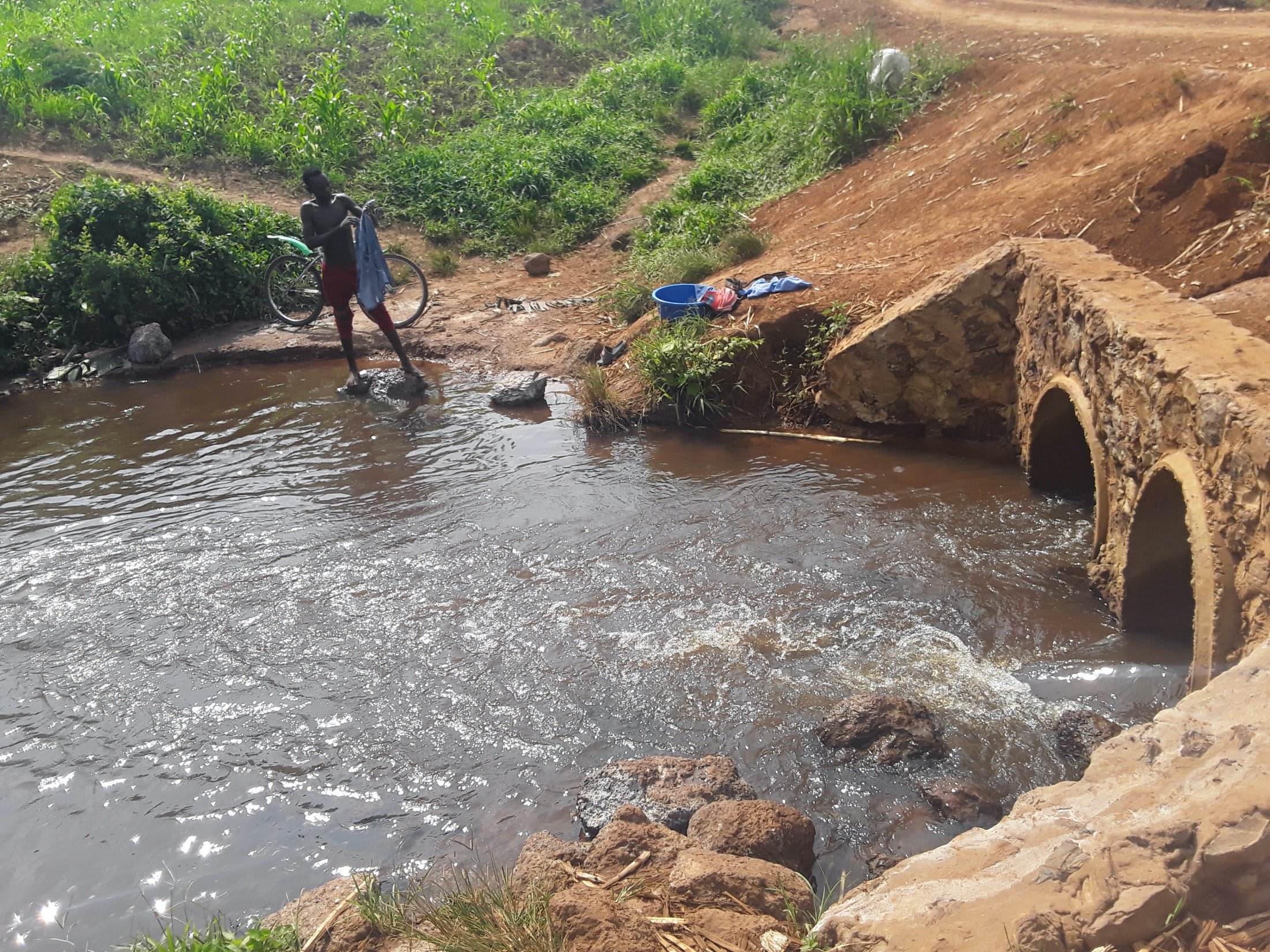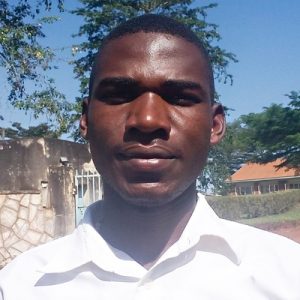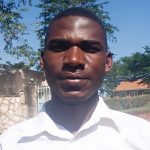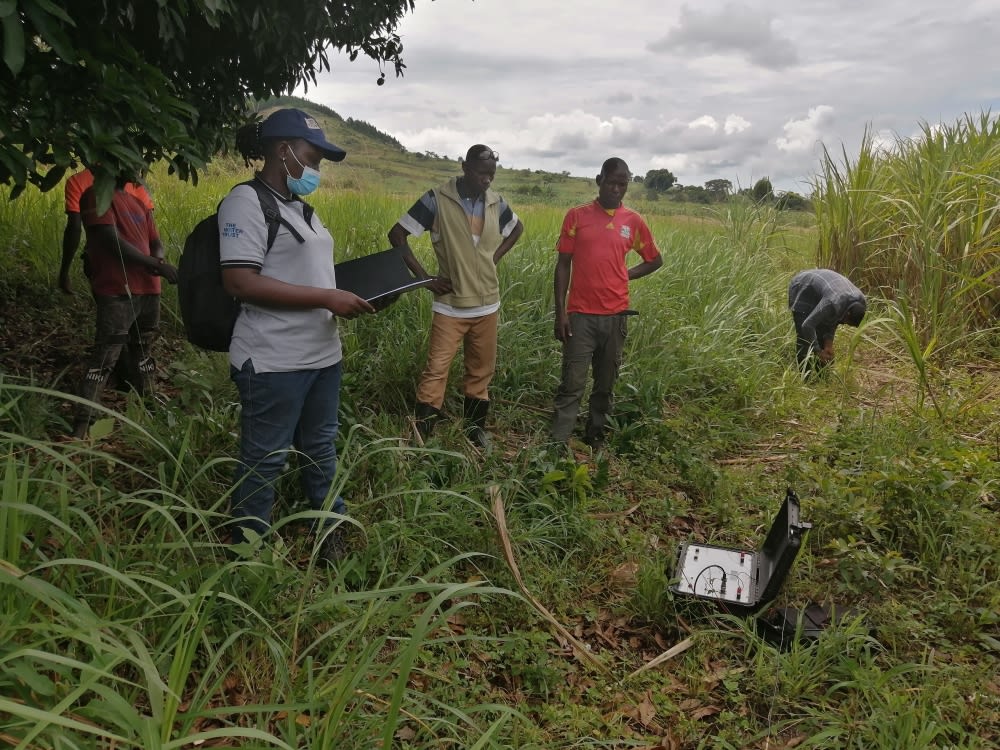The only reliable water source for the 285 people living in Kaitabahuma, Uganda is the open stream. Community members make about 3 trips a day to the stream to get the water they need for everything from drinking to cooking, doing laundry, and washing dishes, among other uses. This area has a very deep water table, based on a hydrogeological study we conducted in 2019. That is why the few wells that were drilled more than a decade ago sit unused - because they did not tap into the water so far underground. Because of the geological formation of the area, it is also prohibitive to implement low-cost technologies such as shallow hand-dug wells.
That means, people must go to the most reliable water source: an open stream.

The stream is filled with runoff from farms and it is very turbid (full of particles) - making it unsafe for drinking. There is also a protected spring, but the spout was set too low so it is often submerged underwater. That pooled water then becomes unsafe as it sits stagnant throughout the day. People dip their containers into the water, making it even dirtier.
"Worm infestation in children could be due to this drinking water source," said one person we spoke with while visiting the community.
Our team also met Harriet Ochokuru, a 23-year-old mother of 3 children. She has lived in the area for 16 years.
When asked about water supply conditions for drinking in her community, she said, “It’s not good because I collect water from the open source down the valley. That is where all households in this community draw drinking water from. It's difficult in the rainy season because the water gets dirty from the runoff.”
When she is lucky, Harriet is able to collect rainwater in buckets that catch the water as it runs down her neighbor's roof. During the dry season, it is more challenging for Harriet. She told us the open source goes nearly dry, exposing the algae and other contaminants at the bottom of the stream. That means that most of the year Harriet and her children drink unsafe water.
“I heard from the Village Health Team that diarrhea and typhoid are caused by dirty water. My elder daughter Brigid has actually been diagnosed with typhoid and is now receiving treatment,” she told us.
Here’s what we’re going to do about it:
New Borehole
A new borehole is an exciting opportunity for this community. We will work with the community to determine the best possible site for this well. Since we already conducted a hydrogeological survey of the area, we are already prepared to dig a well deep enough to provide water throughout the year. By constructing a well in a location people can easily access, the community will be able to finally drink safe water that is easy to get.
Community members will contribute the sand and water needed for mixing the cement during construction. After setting up the rig, the drill team will begin the process of creating a new well. Once the well is drilled to a sufficient water column, it will be cased, developed, and then tested.
Training
Training’s main objectives are the use of latrines and observing proper hygiene practices since these goals are inherently connected to the provision of clean water. Open defecation, water storage in unclean containers, and the absence of handwashing are all possible contaminants of a household water supply. Each participating village must achieve Open Defecation Free status (defined by 1 latrine per household) before the pump installation for a shallow hand-dug well.
This social program includes the assignment of 1 Community Development Officer (CDO) to each village. The CDO encourages each household to build an ideal homestead that includes a latrine, handwashing facility, a separate structure for animals, rubbish pit, and drying rack for dishes.
We also implement the Community-Led Total Sanitation (CLTS) approach with each of our village partners. This aims to improve the sanitation and hygiene practices and behaviors of a village. During these sessions, village leaders naturally emerge and push the community to realize that the current practices of individual households – particularly the practice of open defecation – are not only unhealthy but affect the entire village. CLTS facilitates a process in which community members realize the negative consequences of their current water, sanitation, and hygiene behaviors and are inspired to take action. Group interactions are frequent motivators for individual households to build latrines, use the latrines, and demand that other households do the same.
Improved Sanitation
The aim is that all households own an improved latrine. Many households do not use a latrine but use the bush. Due to open defecation, feces are spread all over the village. This leads to waterborne diseases and contamination of groundwater and surface water. Our aim is that the community is able to live a healthy life free of preventable diseases. We endeavor that at the end of our presence in the community, people will have both access to sustainable, clean water and access to sanitation. We have now organized families to form digging groups for latrine construction, and empowered them with tools they will need.

 Borehole Well and Hand Pump
Borehole Well and Hand Pump
 Rehabilitation Project
Rehabilitation Project


























